Eerie calls, dances: surveys reveal park’s fascinating birds
Explore the lives of some of the Sunshine Coast Ecological Park’s avian inhabitants, following bird surveys by staff, consultants and volunteers across the site.
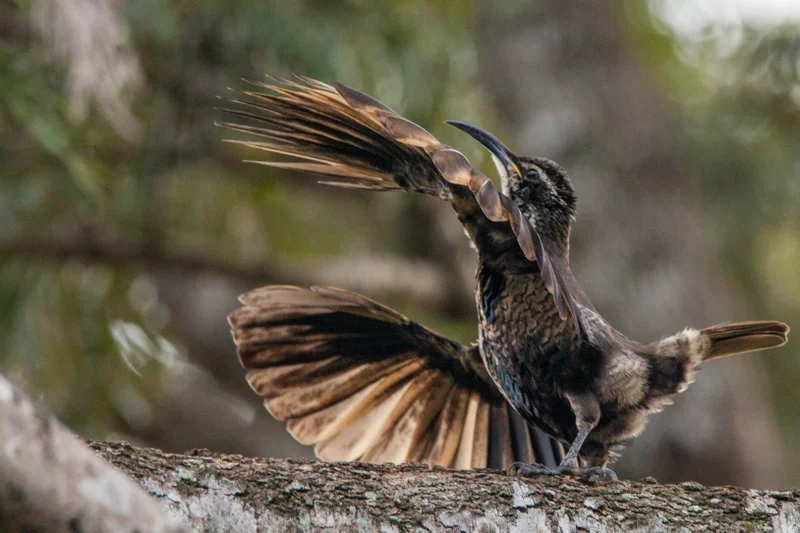
Photo by Rod Edmonds
From cat-like cries and masterful duets to nests made of spider webs, the Sunshine Coast Ecological Park is already home to some of our region’s most magnificent birds – and during Australia’s biggest citizen-science event, Aussie Bird Count (October 20-26), it’s the perfect time to introduce them.
Council staff, consultants and volunteers have found more than 105 species of birds as part of bird surveys in the early investigation and planning phase for the future 65-hectare ecological park in Maleny.
The local community is playing an important role in the park’s early evolution including activities such as revegetation planting and bird surveying.
This month, a dedicated team of BushCare volunteers took the chance to visit the site for training from Council staff on how to spot, identify and record local bird species.
These surveys will help Council better understand the ecological park site and help inform future habitat conservation and restoration efforts.
About the ecological park project
The current cleared pasture site will be transformed over decades into a living laboratory for scientific study, cultural storytelling and learning.
It will be a place for our community to connect with nature and each other, and be part of the park’s restorative process along the way.
- Learn more about the Ecological Park and sign up for project news
- Explore more Ecological Park news on Our Sunshine Coast
Birds of the Sunshine Coast Ecological Park
Below are just a few of the remarkable species already at home at the ecological park.
Most of the images were taken at the neighbouring Mary Cairncross Scenic Reserve, which the ecological park will help to buffer and strengthen.
Paradise riflebird
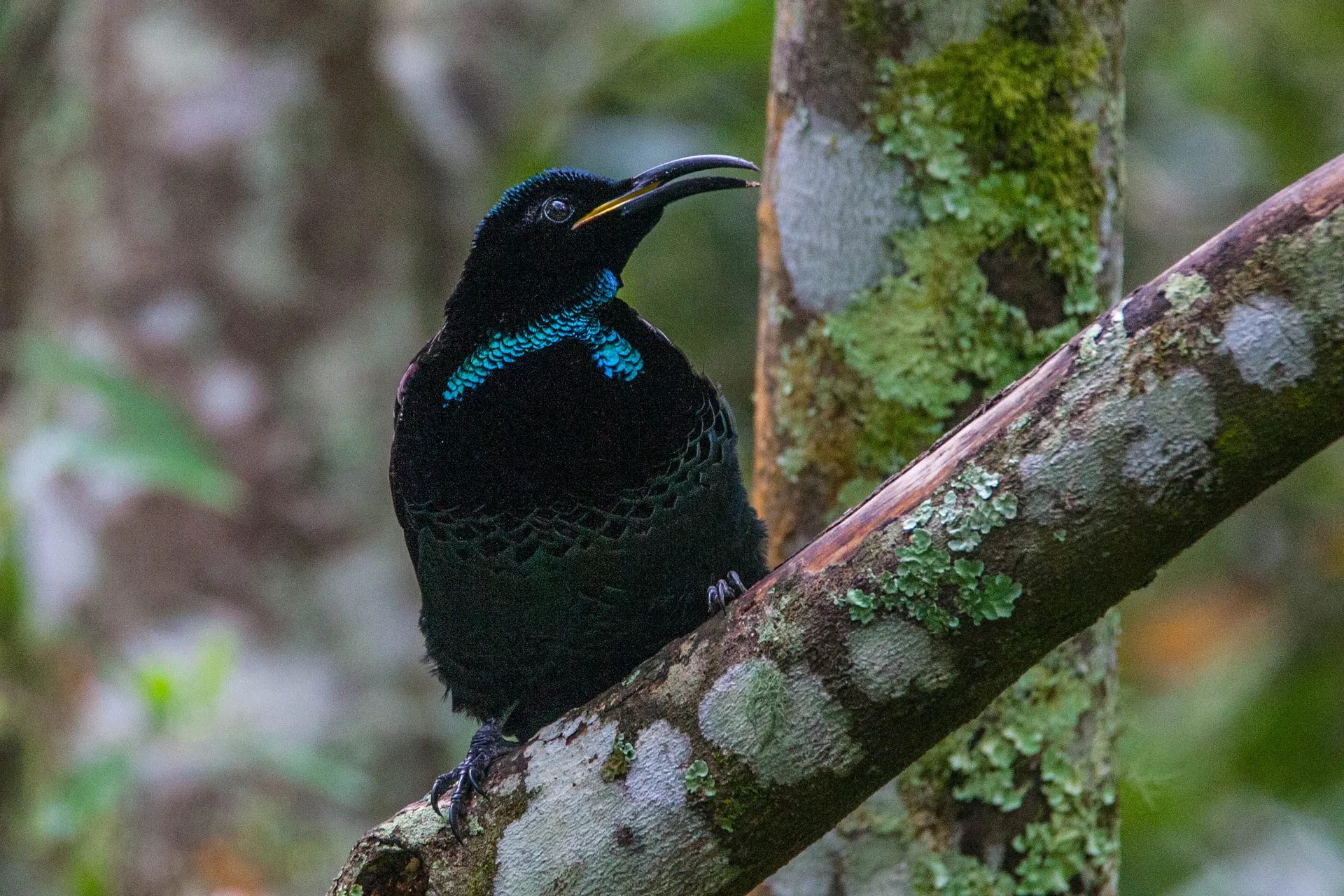
Photo by Rod Edmonds
The adult male paradise riflebird is jet black with an iridescent blue-green crown and breast.
In courtship dances, it raises and fans its wings to reveal oily blue-green under-feathers.
Adult females are rufous-brown above and with light-cinnamon underparts patterned with dark brown chevrons.
Rose-crowned fruit dove
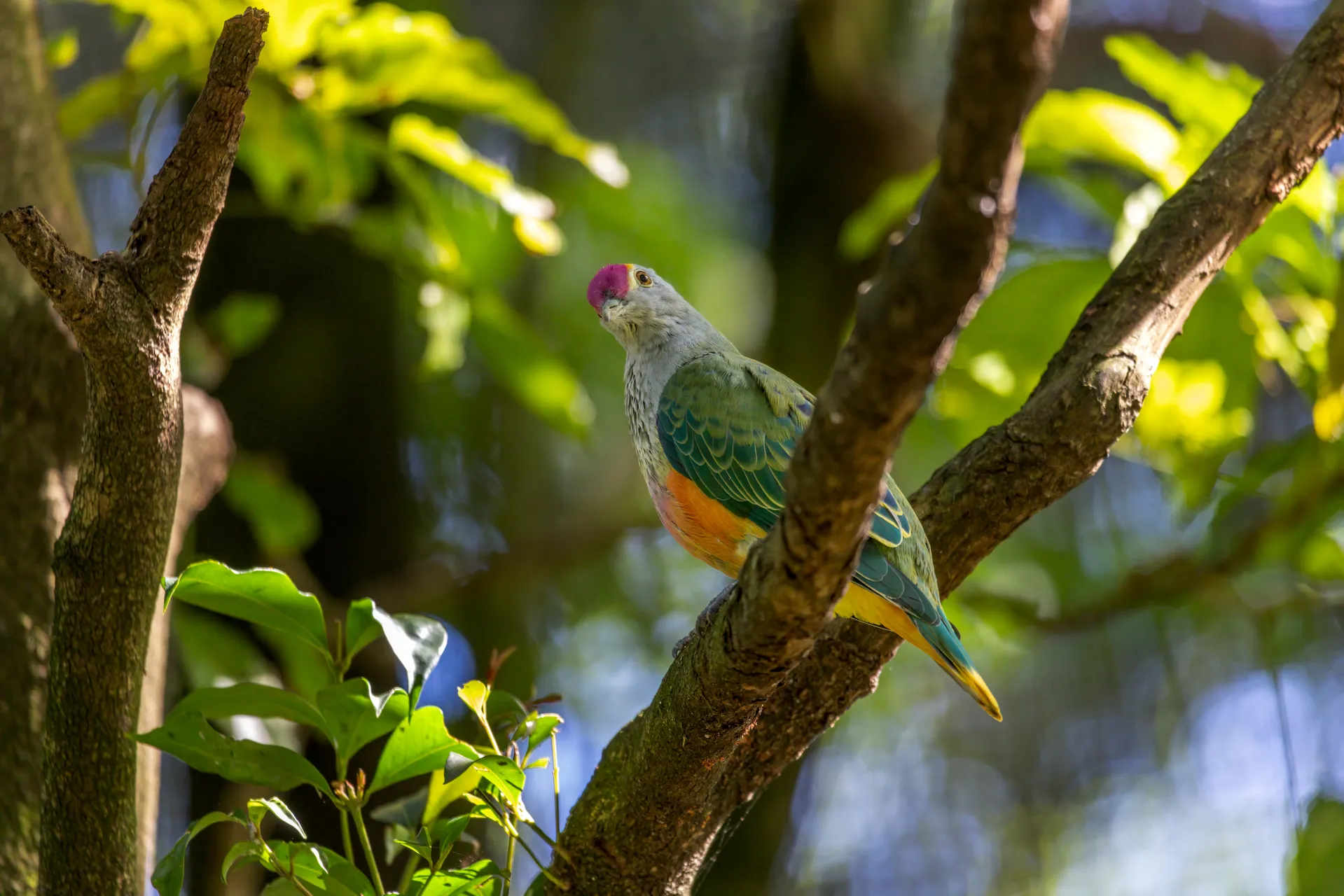
This dove is a vision of pastel beauty, with soft green feathers and a striking rose-pink crown.
Despite its vivid colours, it’s surprisingly hard to spot due to its excellent camouflage among the leaves.
Rufous fantail
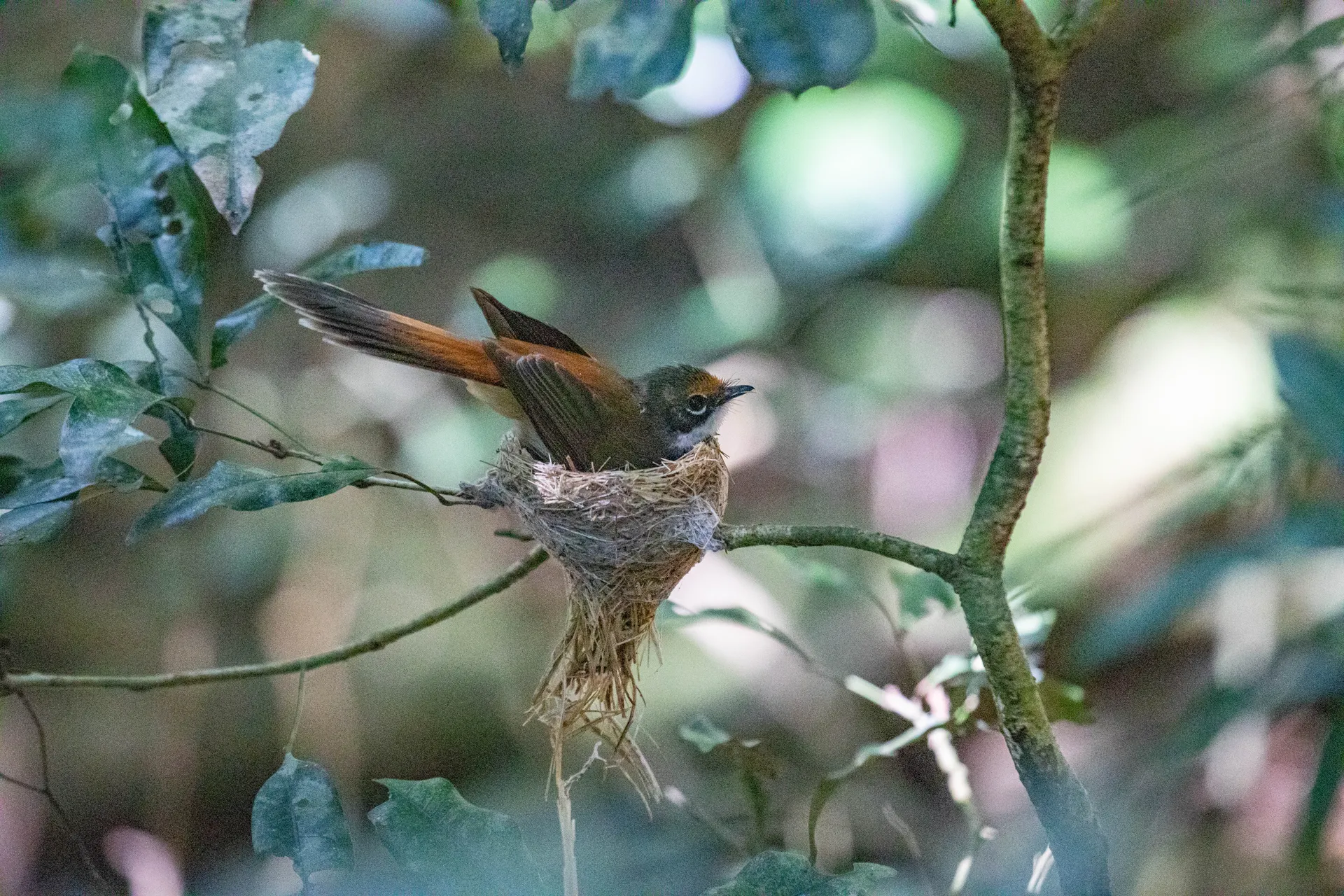
Photo by Rod Edmonds
With its fiery orange tail and energetic movements, the rufous fantail is a delight to watch.
It flits through the undergrowth in search of insects, constantly flicking and fanning its tail.
Breeding pairs build a small cup nest made of fine grasses bound with spider webs, suspended from a tree fork.
Wompoo fruit dove
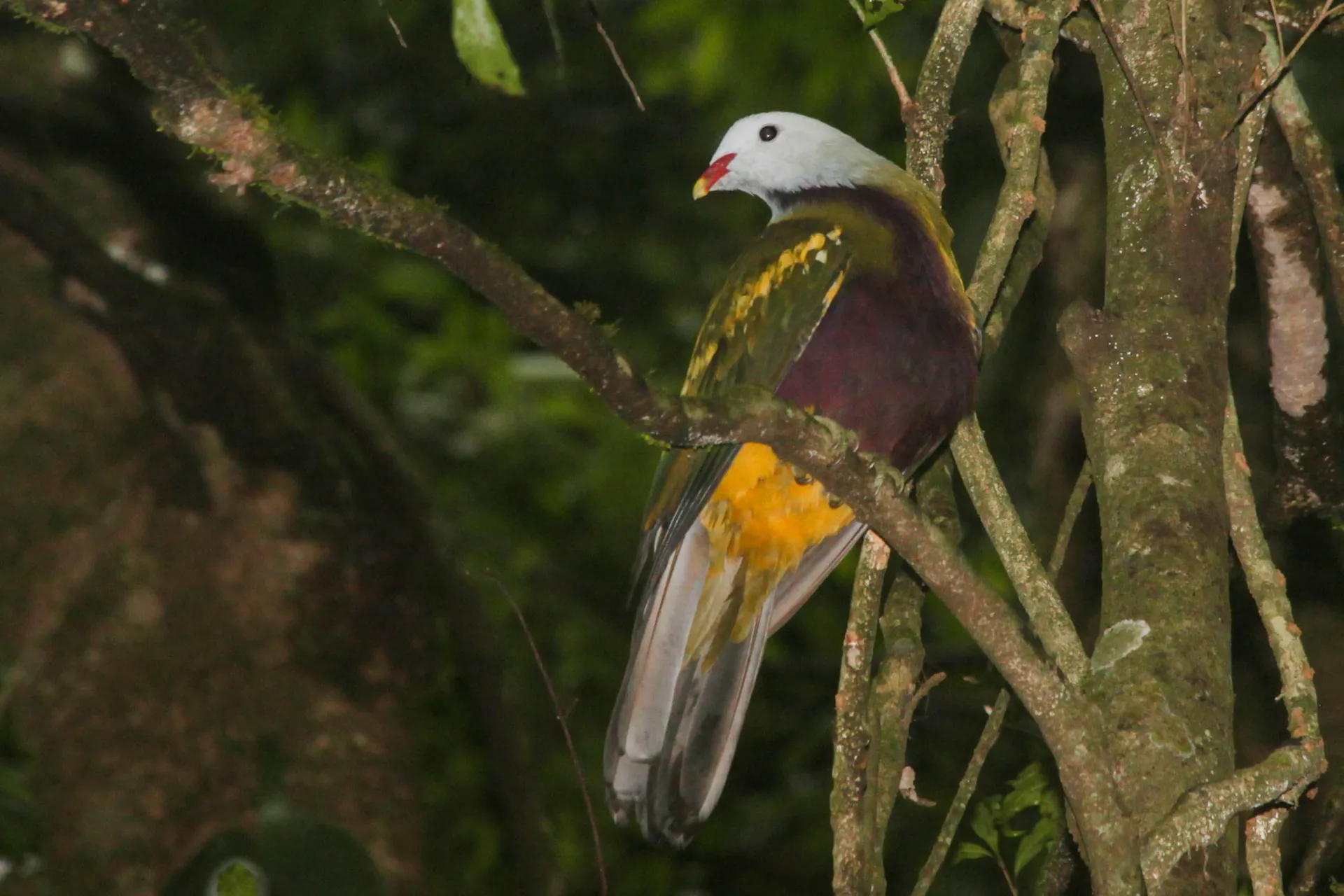
Photo by Rod Edmonds
Large and unmistakable, the wompoo fruit-dove boasts a deep purple chest and a booming “wom-poo” call.
Like many birds, it plays a vital role in seed dispersal across the rainforest.
Its call is so loud it can be heard up to a kilometre away.
Green catbird
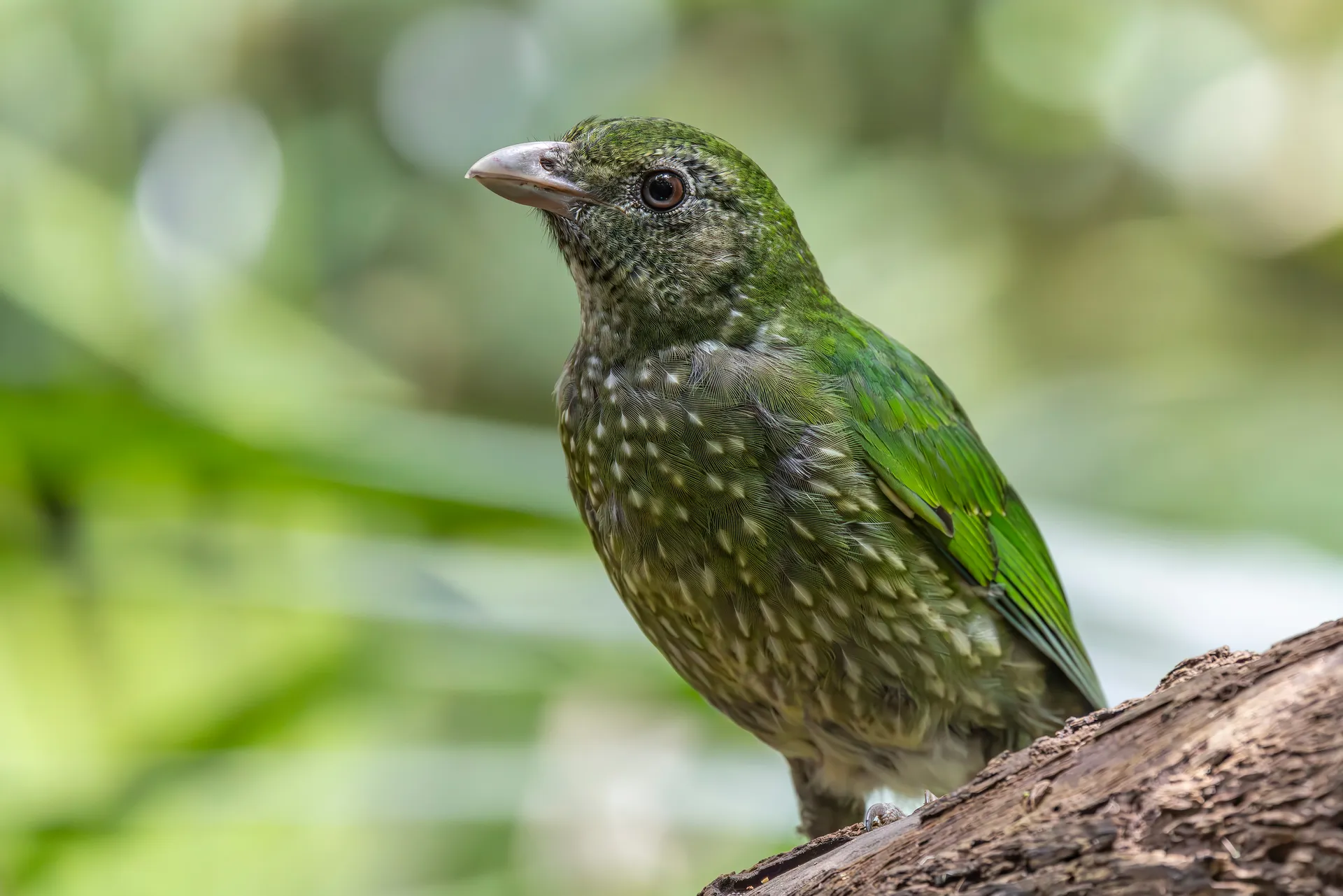
Named for its eerie, cat-like wailing call, the green catbird blends into the foliage with its mossy green feathers.
Despite its camouflage, the green catbird highly vocal and is usually heard before it’s seen.
It’s part of the bowerbird family but doesn’t build bowers: instead, it decorates its nest with leaves.
Eastern whipbird
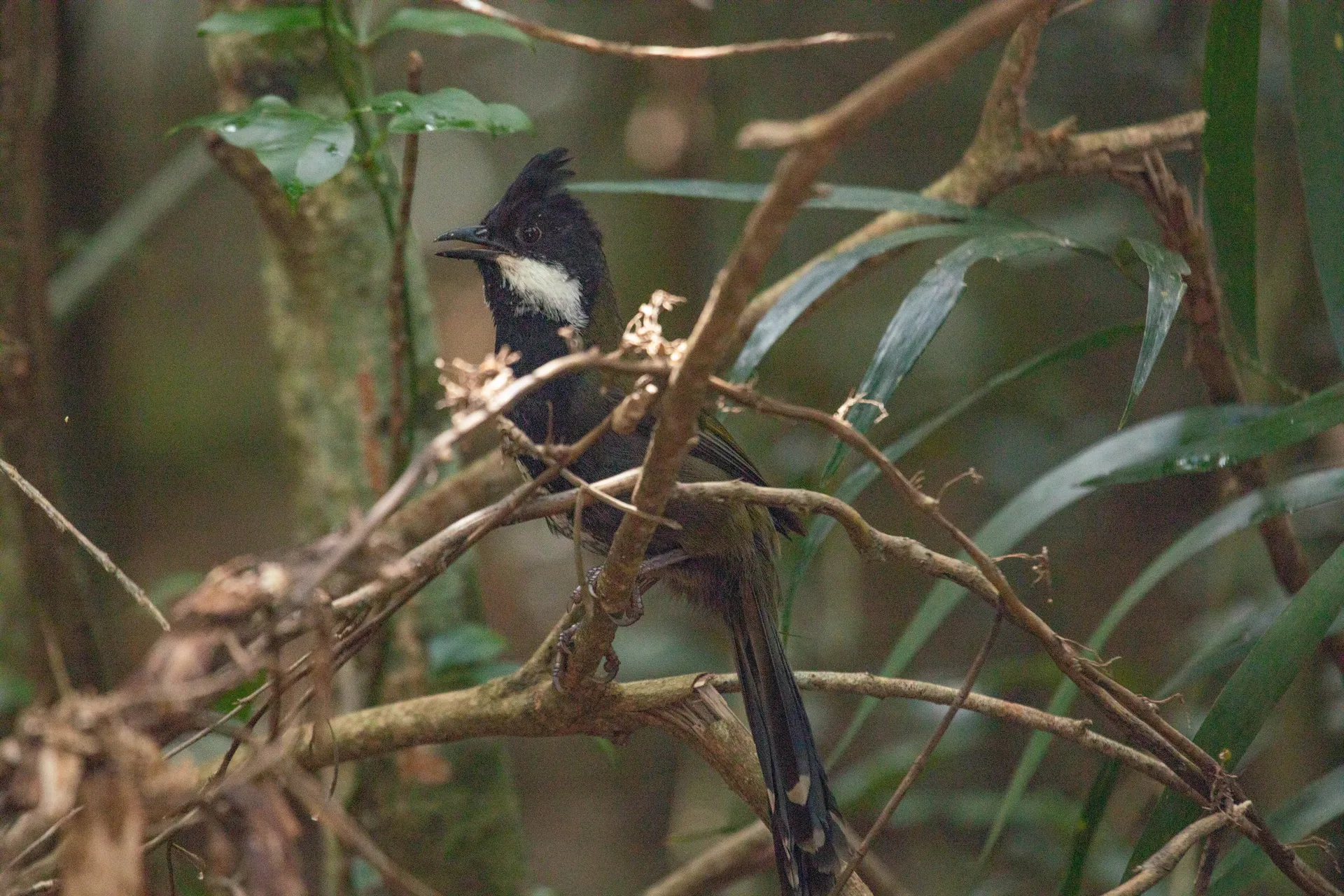
Photo by Rod Edmonds
This bird’s iconic “whip-crack” call is a signature sound of the Australian bush.
That sound is actually a duet between male and female, a marvel of timing and coordination.
The male makes the whip sound, and the female responds with a sharp “choo-choo.”
Aussie Bird Count
From 20-26 October, you can help build a picture of our bird populations and contribute to Australia’s biggest citizen science event.
Visit the Aussie Bird Count website to register and make a difference for our feathered friends!
More to explore as ecological park evolves
Visit the Sunshine Coast Ecological Park project webpage to find out more about the project and subscribe for future project news updates.